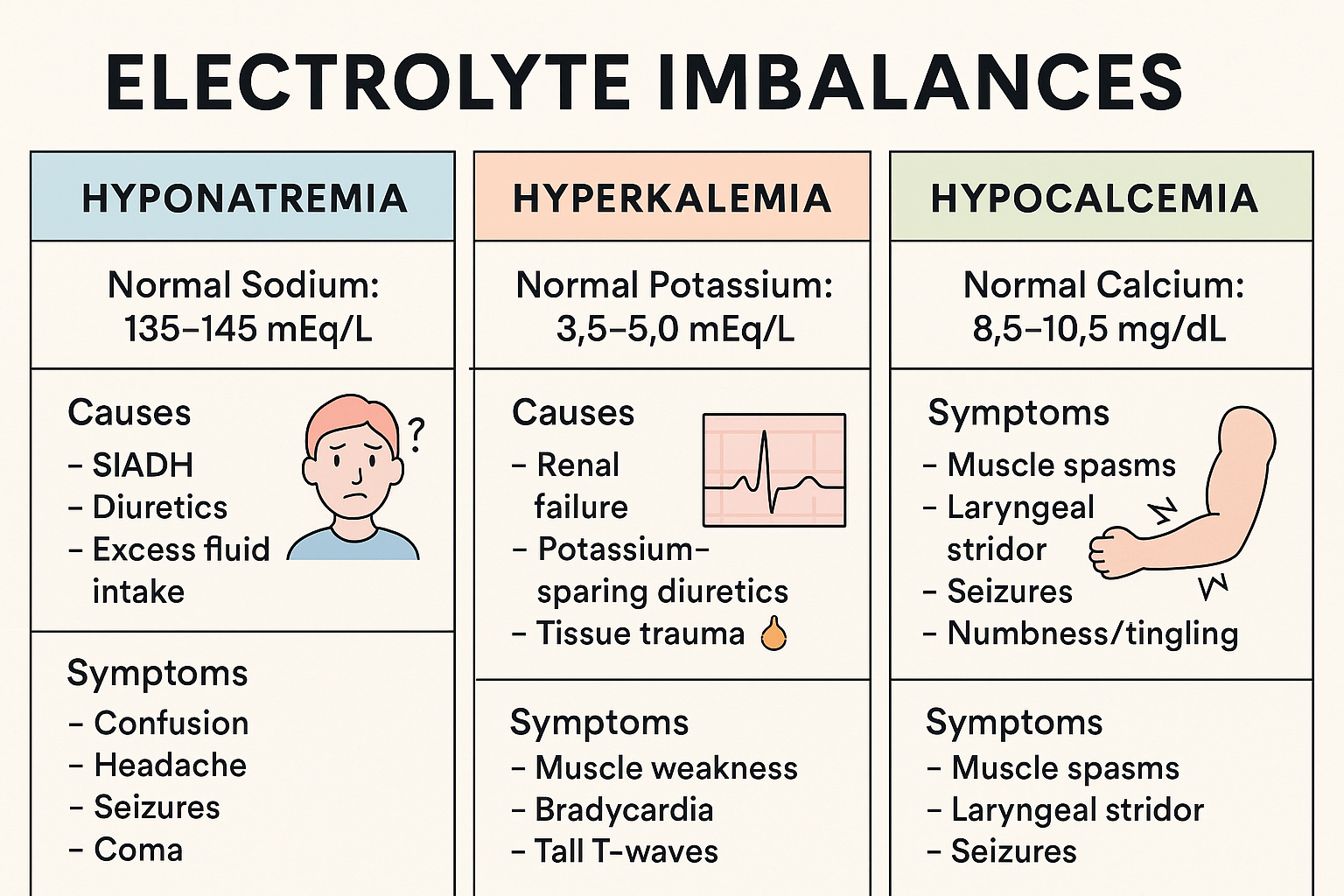🧂 Mastering Electrolyte Imbalances for the NCLEX: Sodium, Potassium, and Calcium
Electrolyte imbalances can make or break a nurse’s clinical judgment—and they’re guaranteed to show up on the NCLEX. Whether it's a question about a post-op patient with low calcium or a child showing signs of hyperkalemia, these core concepts are essential. Today, we’re breaking down the top three electrolyte imbalances you need to know for your upcoming exam—plus, we’ve got a KOTC science visual to lock it all in.
🧂 Hyponatremia (Low Sodium)
| Normal Range | 135–145 mEq/L |
|---|---|
| Causes | SIADH, diuretics, excess fluid intake |
| Symptoms | Confusion, headache, seizures, coma |
| Nursing Priorities | Monitor neuro status, hypertonic saline if severe, fluid restriction |
🍌 Hyperkalemia (High Potassium)
| Normal Range | 3.5–5.0 mEq/L |
|---|---|
| Causes | Renal failure, K⁺-sparing diuretics, tissue trauma |
| Symptoms | Muscle weakness, bradycardia, tall T-waves, cardiac arrest |
| Nursing Priorities | Telemetry, calcium gluconate, insulin + glucose, dialysis |
🦴 Hypocalcemia (Low Calcium)
| Normal Range | 8.5–10.5 mg/dL |
|---|---|
| Causes | Parathyroidectomy, pancreatitis, vitamin D deficiency |
| Symptoms | Muscle spasms, stridor, seizures, tingling |
| Nursing Priorities | IV calcium, airway tray, ECG monitoring |
🧠 How Electrolytes Show Up on the NCLEX
The NCLEX tests not just recognition of abnormal lab values, but also clinical response. Expect:
Select All That Apply (SATA) questions about interventions.
Prioritization questions based on symptoms.
Lab interpretation scenarios tied to patient safety.
💡 Pro Tip: Visit kingofthecurve.org/qotd to practice free NCLEX-style questions updated daily.
🧬 Why KOTC Makes Electrolytes Effortless
KOTC simplifies your NCLEX prep through:
Gamified Q-Banks that adapt to your weak areas
Visual aids like the one above to lock in concepts
Timed multiplayer modes to simulate real test pressure
Custom dashboards to track your progress
See all science visuals, notes, and quizzes at 👉 kingofthecurve.org/studyscience
📲 Final Takeaway + CTA
Electrolyte imbalance questions don’t have to shock your system. With clear visuals, focused review, and daily NCLEX-style practice from KOTC, you’ll turn confusing lab values into easy exam points.
👉 Join 100,000+ learners mastering the NCLEX the smart way.
Start with free-lifetime access here or download the app.
Frequently Asked Questions (FAQs)
-
Aim for 4-6 focused hours, ensuring you incorporate breaks to avoid burnout.
-
Practice mindfulness techniques, take practice exams under realistic conditions, and maintain a balanced lifestyle.
-
Set short-term goals, seek support from mentors, and reward yourself for small achievements.
-
Regular exercise improves focus, reduces stress, and enhances overall mental clarity.
-
KOTC offers personalized learning tools, gamification features, and adaptive question banks to help students stay on track without burnout.


